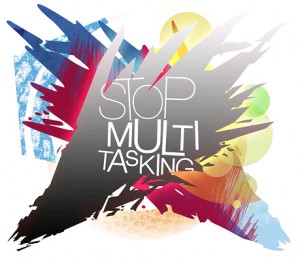|
|
|
Archive for October, 2008
Friday, October 31st, 2008

It’s Halloween and things are scary—
the economy is really hairy;
your savings trashed, your mortgage iffy
and it can’t be fixed in a NY jiffy.
Today is the start of the holiday season,
but to celebrate you need a reason—or do you?
You have a choice to engage your MAP
in doom and gloom or ignore that crap.
What goes up must come down
and the other way around
The pain is real, but it will pass
much faster if you kick gloom’s ass!

Like my rhyme? Here’s another that’s prime.
Your comments—priceless
Don’t miss a post, subscribe via RSS or EMAIL
Image credit image credit
Posted in Just For Fun | No Comments »
Friday, October 31st, 2008

Bats and witches and pumpkins, oh my,
bailouts and options and fat cats who sigh;
a Treasury Secretary deep in the fold
and stock that reeks like decades old mold.
For Halloween you want a costume that scares,
one that will help you keep up with the bears.
So get out the digits, set up for the frey,
nothing is scarier than a 401K!
When the moon rises and the witches fly
you’ll find yourself laughing with wit that is wry.
~~~~~~~~~~~~~~~~~~~~~~
Like my rhyme? Here’s another that’s prime.
Image credit
Posted in Just For Fun | 3 Comments »
Thursday, October 30th, 2008
 Whether you’re an executive, manager or worker, you’re constantly presenting choices to those around you that require them to agree or disagree with ideas and actions; do this or do that; support or not support an initiative. Whether you’re an executive, manager or worker, you’re constantly presenting choices to those around you that require them to agree or disagree with ideas and actions; do this or do that; support or not support an initiative.
From design reviews and marketing campaigns to ordering lunch people constantly argue for their side.
Do those arguments matter? Are they really influencing those who aren’t adamantly on one side or the other?
In a New York Times Op-Ed Sam Wang, an associate professor of neuroscience at Princeton, and Joshua Gold, an assistant professor of neuroscience at the University of Pennsylvania, discuss new research of whether people who say they’re undecided, in fact, really are.
Although the discussion is focused voter claims to being “undecided” in the upcoming election, the research applies equally well to any situation.
“Neuroscientists have begun to tease out the brain systems that make decisions. Even when it takes no more than a second, decision-making is thought to involve two parts, gathering evidence and committing to a choice… brain activity in the parietal cortex rises as evidence is gathered, eventually reaching a tipping point (though it’s not yet known which brain regions drive the final choice).
Inherent to this process is a trade-off between speed and accuracy. Commit early and you can get on with your life. Take more time and you might make a wiser or more accurate decision.”
How often has someone asked you if you’re seeing a movie Friday and you respond that you haven’t decided yet? Is that true or are you just unaware that you’ve already made an internal decision, but that you’re not yet ready to share it?
In business you need a balance between speed and accuracy that isn’t always easy to achieve, so it makes sense to take advantage of your undecideds by learning enough to recognize what is holding them back in a given situation.
Then, when they’re undecided on the direction for the new multi-million dollar marketing campaign or won’t commit themselves to the architecture of a new product you’ll know both the weight to give their indecisiveness, as well as how to get past it.
Image credit
Posted in Business info, Communication, Culture, Motivation, Retention | 2 Comments »
Thursday, October 30th, 2008
By CandidProf, who teaches physics and astronomy at a state university. He shares his thoughts and experiences teaching today’s students anonymously every other Thursday—anonymously because that’s the only way he can be truly candid. Read all of CandidProf here.
 College is expensive. Students have to pay for tuition, fees, books, school supplies, and all sorts of other expenses. Many years ago, college was still expensive, but at least the average college student could afford to go to college. But tuition, fees and textbooks have increased in price at far more than the inflation rate. Students and parents are understandably upset over this. At many institutions, the tuition goes up every year, sometimes at several times the inflation rate. Many people think that the universities are just raising tuition to be greedy. It isn’t that simple, though. College is expensive. Students have to pay for tuition, fees, books, school supplies, and all sorts of other expenses. Many years ago, college was still expensive, but at least the average college student could afford to go to college. But tuition, fees and textbooks have increased in price at far more than the inflation rate. Students and parents are understandably upset over this. At many institutions, the tuition goes up every year, sometimes at several times the inflation rate. Many people think that the universities are just raising tuition to be greedy. It isn’t that simple, though.
The average student’s tuition does not adequately cover the cost of education. College is not like high school. College professors need to maintain expertise and remain current in their fields of study. That means more than just reading about the subject on the internet. Also, college professors need to be paid. Libraries need to be current, and professional journals are not cheap. Books are not cheap for libraries, either.
State colleges and universities are supposed to be supported by tax dollars. However, state legislatures have cut funding to higher education, reasoning that colleges and universities can make up the difference through tuition. That means that tuition goes up to cover inflation, and then goes up even more to cover the reduction in state funding.
Private institutions rely not only on tuition, but on investments from their endowments to generate operating funds. In today’s economic climate, those endowments are not bringing in much money, so tuition has to rise to compensate.
Then, textbook companies keep coming up with new editions of textbooks. They are pretty proactive killing the used book market, too. I have on occasion tried to adopt an old edition of textbooks when the new editions come out, only to find that the bookstore could not get copies of the old edition. We wound up using the new editions. So much for trying to save my students some money.
As you can imagine, costs quickly spiral upwards too high for most students to be able to afford college. There are some grants and scholarships, but most are for those who have very low incomes.
The wealthy can afford college.
The poor have it paid for them.
The middle class, the bulk of our students, don’t qualify for grants and can’t afford college themselves.
This is where student loans come in. All across the nation, college financial aid offices are advising students to secure student loads. But most of these students are young and have not had any experience with loans. They quickly get in over their heads. Nearly 2/3 of students wind up graduating college in debt. Most owe over $20,000 in loans. Many owe over $50,000 and some students owe nearly $100,000 (if they go from undergraduate to graduate, law or medical school).
This is a serious problem. Students are graduating deep in debt.
Worse, shortly after graduation they have to start paying back their loans, but this is when they are least able to do so. After all, your first job after college normally is not a high paying job (even for highly paid fields). So students graduate with debt, just as they are trying to buy cars, buy houses, start families and do many other things that incur additional debt and expenses.
To add insult to injury, students often have to take more classes than they used to. High schools are turning out students who are not at all prepared for college level work. Close to half of our students require some remedial work in mathematics, reading, and writing. Those remedial classes have tuition, but they do not count towards degrees. This adds a year or more to an undergraduate program and it incurs more tuition, fees and textbook expenses. That is a problem, however, that needs to be fixed at the high school level.
So, what are we to do at the college level? The solution is not to simply force colleges to lower tuition. After all, tuition was raised not out of greed, but as a way to fund the college after state funds and endowments dried up. If states were to fund higher education at the rate that they used to, then tuition would drop. As for textbooks, I’ll leave that to a later post.
What is clear to me is that something needs to be done. We are doing our students a disservice if they are graduating deep in debt. Perhaps our financial aid offices should be working to help students find part-time jobs to fund their education. Perhaps there needs to be more direct government assistance to students in the form of grants.
It is hard to say just what needs to be done. But I see the cost of college getting higher and higher. In fact, it is high enough now that I think that I’d have had trouble affording it and I seriously doubt that I’d have been able to afford graduate school.
There is not an easy fix to this problem. Any fix would require a cohesive and comprehensive plan.
And I simply don’t see that happening.
Your comments—priceless
Don’t miss a post, subscribe via RSS or EMAIL
Image credit
Posted in About Leadership, CandidProf, Leadership's Future, Leading Factors | 7 Comments »
Wednesday, October 29th, 2008

Now see what to do about it
Your comments—priceless
Don’t miss a post, subscribe via RSS or EMAIL
Image credit
Posted in Leading Factors, Wordless Wednesday | No Comments »
Tuesday, October 28th, 2008
 Previously we discussed how evolution uses two types of variation – small and large – to explore the map of survival and to climb to the peaks of excellent adaptation for the best survival. Previously we discussed how evolution uses two types of variation – small and large – to explore the map of survival and to climb to the peaks of excellent adaptation for the best survival.
The Power of Many Tests
First let’s consider small and large changes in your services and products.
The consumer packaged goods industry, led by Procter & Gamble, has developed small variations to a science.
If Tide sells well in the 32 oz. box, then let’s try small, large, and jumbo sized boxes of Tide. Some will cannibalize other sizes and some (most) will just plain flop. But a few will grow and flourish in the grocery aisles. Product managers have created many other extensions of Tide – low suds, color-safe, and probably even low calorie. Each one is a single, small step exploring the landscape of consumer preference– and each one is an attempt to climb to a peak of survival in the grocery aisle.
This testing of small product changes goes on in almost every other market.
- Software providers offer many performance levels – entry level, professional, and enterprise.
- Credit card providers offer a wide variety of features in their card products – low interest, cash-back, donation to your favorite organization, points, and even your picture on the card.
Large variations may be a little less obvious, but are just as common.
Building on Tide’s success with consumers, product managers developed Tide-in-a-stick, which can remove stains immediately, even without washing. Can Tide make the jump from the laundry shelf to the consumer’s purse?
Apparently so. This is a large jump to a different environment.
- Intuit, the maker of TurboTax, recently began offering loans on tax refunds.
- Cable companies are now offering telephone service and telephone companies are attempting to offer television service.
Embrace Your Ignorance—Focus on the Failures
The examples of product variations discussed above appear to be pretty obvious. But we did not mention any of the failures, only the successes. The failures are gone from the grocery shelves and never even made an impression on us. These failures represent over 90% of the trials, so in running a business, we cannot ignore them. On the contrary, we need to understand them much better.
Bluntly, you cannot skip the failures and go right to the successes. That is called predicting the future and our track record is not very good there. Looking at a random process like the stock market prices, results demonstrate that an index fund—an investment that tracks a particular index (S&P 500, DJIA, etc.)—outperforms over 85% of the active mutual funds consistently, every year. Similarly, a strategy of dollar-cost investing (the same dollar amount every month) consistently outperforms attempts to time the market with purchases and sales.
Axiom of Evolution: The future is unpredictable.
Corollary: Central planning never works.
Evolution does not attempt to predict the future. It does not know, and does not care. To dramatically illustrate the point, evolution has no central planning committee. In a tangible sense, evolution does not even exist. How’s that for a lack of central planning.
For us as business leaders, the first step is admitting we have a problem. Repeat after me, “I cannot predict the future.”
Already I can hear the protesting thoughts in your mind. “I know my business. “I know my market.” “I know my customers.” And yet, the customers and markets continue to surprise us all.
Central planning never works—at the level of governments, businesses, and even individuals. The future simply holds too many surprises for each of us, both personally and professionally. The only events we can depend upon reliably are the failures. Successes are much too rare, and much too random.
So, let’s take a minute to study our reliable friends – the failures – and the patterns they create. Our problems with managing failures are twofold, both related to our desire to pick winners according to our view of the future.
We kill off experiments too soon.
- We do not allow enough peculiar experiments to blossom. Early in the process, we identify some experiments as losers and shut them down before they can yield any useful information.
We allow our favorite experiments to continue too long.Governments suffer this phenomenon in particular. Once started, government programs are almost impossible to shut down.
- One good example is the temporary tax placed on telephone service to fund a war in the Philippines, back in 1898. This tax was finally eliminated only a few years ago, in 2005.
- Bridge and road tolls are another example. Originally these tolls were put in place to pay for the construction of the bridge or road. But, once in place, these revenue generators almost never get removed.
- On the spending side, any number of New Deal era programs are still in operation today.
In addition, when these programs are finally addressed, they are not terminated, but only cut back, or redirected. Like vampires, they keep coming back to suck the life out of the organization.
Evolution tolerates an extremely high failure rate for its mutations—well over 99% of its experiments do not succeed. To keep the experiments from overwhelming the rare successes, evolution is very disciplined about its five basic rules for failures:
- Fail often.
- Fail fast.
- Fail small.
- Fail cheap.
- Fail uphill.
Fail often. Evolution is a master at frequent failures. In every single generation, every single organism is a new test. Of these, well over 90% fail the basic test – survival to reproduce the second generation.
Fail fast. Evolution tests each of its experiments immediately, in the next generation. It does not allow any experiment to live a sheltered life in a protected hothouse while the engineers perfect the technology, or the marketers search for the right market.
Fail small. Evolution has designed each test as a single organism, so each individual test is small. Limiting the size and scope of an experiment in a business takes a little more creativity. Speed can help. Forcing each experiment into tests soon and often will help to keep the failures small.
Fail cheap. Fail cheap. For evolution, cheap and small are synonymous. A test of one single organism is not only small, it is cheap, at least for the species, if not for the organism. For a business, if a failure is small and fast, then it is also likely to be cheap.
Fail uphill. This may be one of the most peculiar characteristics of evolutionary variation. In a completely random manner, evolution manages to fail uphill. By spraying out a large number of variations in all directions, evolution tests the “slope” of better survivability on the hill. Only a few variations actually move up the hill. The very next generation incorporates those few successes into the next experiments. Thus, while most experiments fail, the net direction is up the hill of better adaptability and survivability.
Frequent Failure Checkup
- How many experiments does your organization run each year?
- How do you encourage and nurture experiments?
- How do you test each experiment? How soon? How often?
- What are the consequences of each test?
- How many experiments does your organization shut down each year?
- How many vampires (failed experiments) are still sucking resources?
- What signs identify your vampires?
- How do you finally kill your vampires?
Next week we will dig a little deeper into the two primary mistakes mentioned earlier—killing most experiments too soon and not killing off the vampires soon enough. Both of these mistakes are extremely difficult to overcome, because they stem from our internal belief systems. Evolution has some suggestions here, as you may have already guessed. See you then…
Posted in Business info, Innovation, Personal Growth | 1 Comment »
Tuesday, October 28th, 2008
By Wes Ball. Wes is a strategic innovation consultant and author of The Alpha Factor – a revolutionary new look at what really creates market dominance and self-sustaining success (Westlyn Publishing, 2008) and writes for Leadership turn every Tuesday. See all his posts here. Wes can be reached at www.ballgroup.com.
Is there really a lending problem? I know several people who doubt it.
One is a local car dealer. He was almost dazed as he related a story to me about selling a used car to a woman who had a bankruptcy five years ago. He sold her a nice car for $27,000. She did not have the first payment she needed to make the deal. Three banks (Bank of America, Citizens Bank, and one other I can’t recall) all offered her a loan for $32,000. That’s on a car that would only give her $22,000 on trade-in, if she sold it back one week after consummating the deal.
I also know another young couple who just purchased a $19,000 van. They had no problem getting a loan despite the fact that they have very low income. The rate was 18.5% – about three times what should be available. When an older and wiser friend challenged them that they could not afford the payments needed, they said, “Well, they must know what they are doing. They offered the loan to us.” The friend helped them sell the car, pay off the debt they still owed on the van, and get them into something they could afford.
So what’s wrong with these scenarios?
In the first case, at least one of those banks is in the midst of getting a getting an infusion of taxpayer cash from the U.S. Department of the Treasury, because they lost so much money on poor-quality loans. In the second case, the justification for making a really bad decision was that the blame was really on someone else. Worse yet, someone helped them get out from under the burden, but it is obvious from talking to them that they really don’t understand what was wrong with their decision.
We’ve just gone through the scariest financial event in my lifetime, but we aren’t through the consequences of banks, mortgage companies, investment companies, investors, consumers, and the U.S. government all thinking they can get away with making really stupid financial decisions because the blame can be cast upon someone else. It’s like watching three year olds pointing fingers at each other and expecting mom to “buy” it.
What is it going to take for us to finally understand that it doesn’t work to either expect someone else to make things right for us when things go bad or to do things that enable those persons making bad decisions to go on making bad decisions?
Isn’t it time that we let people take responsibility for their decisions?
If people want to have the freedom to make decisions for themselves, shouldn’t they also be required to take the consequences of those decisions?
Your comments—priceless
Don’t miss a post, subscribe via RSS or EMAIL
Image credit
Posted in Communication, Ethics, Leading Factors, Politics, Wes Ball | 5 Comments »
Monday, October 27th, 2008

I’ve written (ranted?) several times on the evils of multitasking and every time I turn around there’s more proof that it doesn’t raise productivity, improve results or cure your time crunch.
Proof, that is, in terms of scientific research as opposed to subjective evaluations.
The most recent was in Sunday’s NY Times that brought out the fact that you don’t really do things simultaneously; rather you switch your focus back and forth between them.
That may sound OK, but the problem is in the lag time, since the human brain doesn’t do the switch instantaneously.
Sure, some multitasking is just rude, think talking on the phone and doing email, while some is downright stupid, like texting and driving.
“…17 drivers, age 17 to 24, to use a driving simulator to see how texting affected driving.
The reaction time was around 35 percent slower when writing a text message — slower than driving drunk or stoned.”
But what about the multitasking that you’re forced to do at work? Jumping back and forth on projects, checking/responding to email, answering questions, etc.?
“A 2005 study, “No Task Left Behind? Examining the Nature of Fragmented Work,” found that people were interrupted and moved from one project to another about every 11 minutes. And each time, it took about 25 minutes to circle back to that same project.”
Have things changed or are the older studies holding true?
According to Gloria Mark, a professor of informatics at the University of California at Irvine and a co-author of that study and a new one published last April titled “The Cost of Interrupted Work: More Speed and Stress” showed that “people actually worked faster in conditions where they were interrupted, but they produced less… Ten and a half minutes on one project is not enough time to think in-depth about anything.”
Impressive. One action that single-handedly kills productivity and innovation, while increasing stress.
Multitasking seems to be a great tool for those who manage by intimidation and abuse, but for the rest of us it would be better to focus and spend some time on innovative approaches that minimize multitasking for yourself and your people.
And before you add a silent ‘but me’ think about which side of ‘but me’ your choice plays to.
Image credit
Posted in Business info, Culture, Innovation, Motivation, Personal Growth, Retention | 3 Comments »
Monday, October 27th, 2008
 I thought you might be up for some fun today and one of the most fun things I do is read is Guy Kawasaki. This weekend I ran into two interesting bits, an interview and a column in Always On. I thought you might be up for some fun today and one of the most fun things I do is read is Guy Kawasaki. This weekend I ran into two interesting bits, an interview and a column in Always On.
The interview brought something forward that I think is very important, especially given the current economic times.
When talking about his new book, Reality Check, and who makes the best venture capitalist, Guy downgrades MBAs and those who haven’t had operating roles, saying
“Consulting, investment banking and accounting do not provide you with “on the firing line” experience. You’re always the “outside expert” who zooms in, interviews a few people, creates a PowerPoint presentation and then tells people what they should do.
Unfortunately, analysis and ideas are easy. Implementation is hard. A consultant can tell you to reduce your work force by 10 percent, but figuring out who to lay off and looking people in the eyes when you do it is much harder.”
No kidding. A lot harder.
This is important advice for regular business folks in companies of all sizes, not just entrepreneurs, to keep in mind when looking for help in solving difficult situations. In fact, pretty much everything Guy says can be applied with minimum tweaking to any size company, so read the interview and reap the value.
Guy also says that entrepreneurs, like ‘leaders’, aren’t recognizable up front and that the real proof is in the results.
Now for the fun.
Guy considers it “irrational to base one’s mood on the Dow Jones Industrial Average (DJIA). After all, (a) what does that have to do with the real world? And (b) it reflects the buying (and selling) decisions of the same investment bankers who got us into this mess.”
So he created a more rational way to measure the health of the economy. Here are three of the 11 measures that make up the GIA (Guy’s Index of Absurdity).
- Venture capitalists attend board meetings via WebEx rather than Gulfstream.
- Pierre Omidyar [eBay founder] starts selling stuff on eBay.
- Men can speak at Blogher as long as they pay for the time slot.
Enjoy; reading Guy is a great way to start the week.
Your comments—priceless
Don’t miss a post, subscribe via RSS or EMAIL
Image credit
Posted in Communication, Culture, Entrepreneurship, Innovation, management | 3 Comments »
|
 Subscribe to
Subscribe to
MAPping Company Success
About Miki 
Clarify your exec summary, website, etc.
Have a quick question or just want to chat? Feel free to write or call me at 360.335.8054
The 12 Ingredients of a Fillable Req
CheatSheet for InterviewERS
CheatSheet for InterviewEEs™
Give your mind a rest. Here are 4 quick ways to get rid of kinks, break a logjam or juice your creativity!
Creative mousing
Bubblewrap!
Animal innovation
Brain teaser
The latest disaster is here at home; donate to the East Coast recovery efforts now!
Text REDCROSS to 90999 to make a $10 donation or call 00.733.2767. $10 really really does make a difference and you'll never miss it.
And always donate what you can whenever you can
The following accept cash and in-kind donations: Doctors Without Borders, UNICEF, Red Cross, World Food Program, Save the Children
*/
?>About Miki
About KG
Clarify your exec summary, website, marketing collateral, etc.
Have a question or just want to chat @ no cost? Feel free to write
Download useful assistance now.
Entrepreneurs face difficulties that are hard for most people to imagine, let alone understand. You can find anonymous help and connections that do understand at 7 cups of tea.
Crises never end.
$10 really does make a difference and you’ll never miss it,
while $10 a month has exponential power.
Always donate what you can whenever you can.
The following accept cash and in-kind donations:
|








 College is expensive. Students have to pay for tuition, fees, books, school supplies, and all sorts of other expenses. Many years ago, college was still expensive, but at least the average college student could afford to go to college. But tuition, fees and textbooks have increased in price at far more than the inflation rate. Students and parents are understandably upset over this. At many institutions, the tuition goes up every year, sometimes at several times the inflation rate. Many people think that the universities are just raising tuition to be greedy. It isn’t that simple, though.
College is expensive. Students have to pay for tuition, fees, books, school supplies, and all sorts of other expenses. Many years ago, college was still expensive, but at least the average college student could afford to go to college. But tuition, fees and textbooks have increased in price at far more than the inflation rate. Students and parents are understandably upset over this. At many institutions, the tuition goes up every year, sometimes at several times the inflation rate. Many people think that the universities are just raising tuition to be greedy. It isn’t that simple, though.

 Previously we discussed how evolution uses two types of variation – small and large – to explore the map of survival and to climb to the peaks of excellent adaptation for the best survival.
Previously we discussed how evolution uses two types of variation – small and large – to explore the map of survival and to climb to the peaks of excellent adaptation for the best survival. 

 I thought you might be up for some fun today and one of the most fun things I do is read is Guy Kawasaki. This weekend I ran into two interesting bits, an interview and a column in
I thought you might be up for some fun today and one of the most fun things I do is read is Guy Kawasaki. This weekend I ran into two interesting bits, an interview and a column in 
